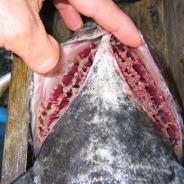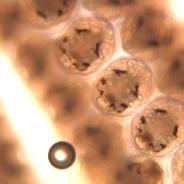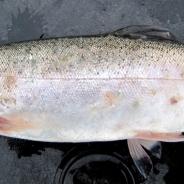Copepods are free-living and parasitic crustaceans. Species that are ectoparasites of salmonids and many other fish species can cause diseases in fresh water and marine aquaculture. Two primary species encountered in the Pacific Northwest of North America are Lepeophtheirus salmonis and Salmincola sp. They can be found commonly on salmonids that are returning to fresh water to spawn. Anglers often refer to them as "fish lice". Parasitic copepods feed on skin, mucus and blood from their hosts. Usually there are few parasites present on fish and they go unnoticed, however occasionally they can become numerous and quite evident on gills, in the mouth and at the base of the fins. When present in extremely high numbers they can cause fish health problems, but this is rarely seen in the wild. Marine copepods will survive for some time in fresh water but eventually die and drop off. Sea lice can cause problems in fish raised in saltwater net pens. The parasite poses no risk to humans or domestic animals.
also known as
salmon louse
sea lice
fish lice
carp louse
Distribution
Salt, brackish and fresh waters
Detection Methods:
gross pathology / gross clinical signs
Target tissue
External, skin & gills


